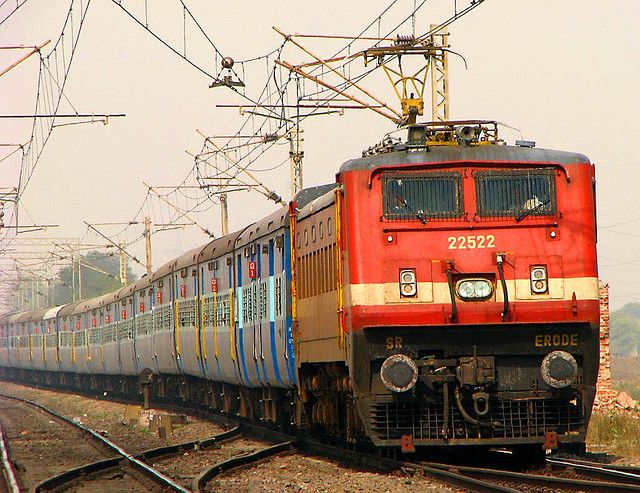Published: August 5, 2025
The Nangal Dam–Talwara railway line is still unfinished nearly forty years after it was first cleared. Only 87% of the ₹2,000 crore project has been completed, indicating a poor pace of advancement. People in the Talwara area of Punjab have aged while they wait for an unfulfilled train. Final construction is still being delayed by compensation issues, land disputes, and delays in forest removal. Prime Minister Modi has stepped up his efforts, but the villagers are still cautious about missing another deadline.

Four Decades, ₹2,000 Crore—Yet No Train in Talwara
A railway line sanctioned in the early 1980s to link Nangal Dam with Mukerian via Talwara remains incomplete nearly four decades later. Promised in 1981–82 and construction starting in 1985, the project—estimated at ₹2,000 crore—has seen only about 87% completion as of mid-2025 (turn0news14turn0news15.
That makes it one of India’s longest-pending rail ventures. Local residents, many of whom were children when construction began, are now elderly, still without a functioning train service in their remote region.
Waiting a Lifetime: Stories From the Ground
Villager Jatinderpal Singh, now 62, recalls the project survey team visiting his home village, Bringali, in the 1970s. He says he used to escort officials during survey work. Today, he says with regret:
“Politics and expenditure have changed, but the tracks still haven’t reached Talwara as promised.”
(turn0search2turn0search0
For communities in Talwara, the rail line has become more than transport—it’s a symbol of betrayal and deferred development.
What’s Done—and What Still Holds Up Progress
From Nangal Dam to Daulatpur Chowk, a 60-kilometer length is already functioning. The final 23.7-kilometer stretch of the Daulatpur to Talwara corridor is still unfinished, though. The final 2.5–3 km segment near Talwara is stuck due to unresolved land acquisition and forest clearance issues (turn0search0turn0news15.
Punjab must still acquire approximately 72 hectares of land, while demands for fair compensation continue to stall progress. Locals allege that landowners were offered far less compensation compared to neighboring Himachal Pradesh—even though acreage requirements are similar (turn0search0turn0search5.
Adding to the delay are environmental clearance bottlenecks. Forest clearance for upcoming bridge construction and elevated sections remains pending, held up in red tape. The project cannot move forward without these approvals (turn0search0turn0news15.
Why It Matters: Economic & Social Dimensions
| Aspect | Significance in Talwara Region |
|---|---|
| Connectivity | Rail connection would link remote areas to Mukerian and beyond |
| Economic boost | Lands, saw the proposed link as a path to markets and opportunity |
| Strategic access | Helps bridge Punjab and Himachal Pradesh via reliable transport |
| Public trust | Delays reflect systemic planning and bureaucratic failure |
Residents and analysts believe the unfulfilled rail promise has cut off growth opportunities in the region. With decades passing, land value and hopes continue to fall short against official assurances.
Renewed Push from the Top—But Can It Close the Gap?
Efforts to revive momentum increased in mid-2025 after Prime Minister Narendra Modi personally flagged the delay during a Pragati review meeting. Fresh deadlines were set and ministry interlinks tasked with facilitating the remaining clearances (turn0search0turn0news15turn0search0.
Railway officials confirm contractors—including NP Jain Construction and RKC Infrastructure—are working on the remaining elevated section. The target completion date is December 31, 2027 (turn0search0turn0search12.
Despite the political attention, villagers remain wary. Many say they’ve seen similar promises before—and they doubt further announcements will seal the last link across time and bureaucracy.
Expert Perspective: Fix Needed Beyond Rails
From a desk-based infrastructure reporting lens, Punjab’s Talwara rail saga highlights recurring issues:
Rural infrastructure is frequently derailed by unjust compensation and delayed land acquisition.
Red tape on clearances, particularly in environmentally sensitive zones, slows projects indefinitely.
Contract monitoring needs better accountability when projects drag decades beyond deadlines.
Railway watchers argue the project should have had transparent timelines, phased clearances, and proactive engagement with landowners. A major policy review is overdue.
What Lies Ahead: Bridges, Tracks, and Trust
If land acquisition and environmental approvals are fast-tracked, construction firms can complete the remaining elevated corridor before the stated 2027 deadline. Residents hope that the new PM-level scrutiny will translate into action, not just announcements.
For a village whose people still ask, “When will the train finally come?”, the future rests on bureaucratic will and execution discipline. The Rs 2,000 crore spent is meant to deliver a once-in-a-generation train link—not another milestone of red tape and delay (turn0news15turn0news14.
Final Thought
After more than 40 years, the Nangal Dam–Talwara rail line still lacks the final rails needed for connectivity. While ₹2,000 crore has already been spent, the road ahead is stalled over just a few kilometers. For Talwara’s residents—some elderly, some aging before dreams—they await more than just a train: they await closure.
Whether the freshly renewed political push brings the tracks home, or leaves Talwara waiting for yet another generation, remains to be seen.
Source: The Economic Times – Punjab village’s 40-year train delay: The Rs 2,000 crore question. When will the train to Talwara arrive?
Read full report


